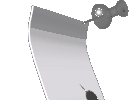|
|
 |
|

Alam nyo ba....
|
 |
|



The Philippines

 The Philippines was named after the Crown Prince Philip II of Spain. He was reputed to be an extreme introvert,
austere, humorless, and unpopular. Dubbed the "Spider of the Escorial" because he seldom left his palace, Philip II reigned
over the vast Spanish empire handed down by his father, Charles V, and was a leading patron of Catholicism. He was elegant
and slender and, in his youth, good-looking. Philip's reign, however, marked the decline of Spanish power, leading one historian
to describe him as essentially mediocre and paralyzed by indecision. (From Bong Barrameda's Pinoy Trivia Vol.
2, Anvil Publishing, 1993). The Philippines was named after the Crown Prince Philip II of Spain. He was reputed to be an extreme introvert,
austere, humorless, and unpopular. Dubbed the "Spider of the Escorial" because he seldom left his palace, Philip II reigned
over the vast Spanish empire handed down by his father, Charles V, and was a leading patron of Catholicism. He was elegant
and slender and, in his youth, good-looking. Philip's reign, however, marked the decline of Spanish power, leading one historian
to describe him as essentially mediocre and paralyzed by indecision. (From Bong Barrameda's Pinoy Trivia Vol.
2, Anvil Publishing, 1993).
Related article: What's in an Infamous Name?

The Filipino
The term Filipino originally referred to Spaniards and Spanish mestizos born in the Philippines. Espanoles-Filipinos
was the term that these people called themselves. Later, the native indios and Chinese mestizos also called themselves
Filipinos in the belief that education and wealth gave them the cloak of Spanish culture. (From Bong Barrameda's Pinoy
Trivia Vol. 1, Anvil Publishing, 1993).

Pinoy
It is believed that the term Pinoy to mean Filipino originated from the early Filipinos who came to the United States.
The Manongs (uncles) as the "oldtimers" were also known called themselves Pinoys to distinguish themselves from
Filipinos living in the Philippines. (Contributed partly by Dawn Bohulano Mabalon whose family has been using the terms Pinoy/Pinay since the 1920's.)

Flip
No one is certain where Flip came from to mean Filipino. Continuing discussions in soc.culture..filipino, soc.culture.asian.american and in the pinoy mailing list make it certain that flip was originally a derogatory word for a Filipino
similar to gook and chink. Some pundits say flip came from either 'funny little island people'
or 'flippin' little island people' or 'funky little island people'. In early to middle 1980's young Pilipino-Americans (as
opposed to Filipino-Americans) began to use the term for themselves to make known their identity as Pilipino-Americans (the
use of Pilipino instead of Filipino seems to be also another identity issue). Flip thus became an empowering word of
identity. However, many are against owning the word because of its derogatory origins.

Taga Cavite ka ba? click here
|
 |
|
Onli in da Pilipins.....
| our favorite indian mango |

|
| click here for more pics |
|
|
|
Pinoy na Pinoy
Halo-Halo!
Halo-halo literally means, "mix-mix". And its is just that: a mixture
of sweetened fruits and beans, lavished with pinipig (crisp flattened rice flakes), sugar and milk, topped by crushed ice
and ice cream. You know its summertime when halo-halo stand start sprouting by the roadside and by the beach, all whipping
up their heavenly concoctions of such a refreshingly divine dessert. You can make your own by selecting and mixing your ingredients
to make a perfect Halo-Halo. Halo-Halo is uniquely, unforgettably Filipino!
KALESA
The kalesa or karitela is a horse-driven carriage that was introduced during the 18th century. It was used
by Spanish officials and the nobles as a means of transportation. The Ilustrados, the rich Filipinos who had their own businesses,
used the kalesa not only for traveling but as a means a means of transporting their goods as well.
BAKYA
Made primarily of lightwood (laniti and santol trees), it
is sculpted with a slope and shaved to a smooth finish, then painted with floral designs or varnished to a high sheen. The
upper portions, which are made of rubber or transparent plastic, are fastened to the sides by thumb nails called "clavitos".
The bakya industry prospered during the 1930s when the Filipinos began exporting these to the other countries.
SORBETES
This sweet treat was concocted in the early 1920's, a
time where a single centavo could buy you almost anything. The process of this ice cream making and selling it in carts with
colorful designs is still the same. Back in the old days, these ice cream dealers bred their own cows and milked them with
their own hands to ensure the freshness and sanitation of the milk needed to make the "dirty ice cream".
Waling Waling Orchids
With some 800 to 1,000 species of orchids,
the Philippines has one of the richest orchid floras in the world. Philippine orchids come in an amazing array of shapes,
sizes and colors. Most grow only in old-growth forest, often on branches of huge trees dozens of meters above the forest floor.
Eat Balut!
Unhatched duck's embryo,
another unspeakable ethnic food to outsiders, but oh, to indulge in guilty pleasures! Sprinkle some salt and suck out that
soup, with gusto.
Worlds Smallest Bat
The
smallest bat in the world can be found in Subic, Common name : Lesser Flat-headed Bat Scientific name : Tylonycteris pachypus
: Head to body (length): 6 cm - 6.2 cm
Forearm length : 2 cm - 2.5 cm
Weight:
1 - 2 grams
Roosting place : bamboo internodes
BAHAG
The bahag or loin cloth of the Mountain Province is an exquisitely hand-loomed piece of long cloth that is
wrapped around the man's middle. Much of the modern bahags have found their way to the low land as table runners, serviettes,
and other decor and fashion accoutrements |
|
 |
|
|
 |
|
|
|
|
|
|
 |

